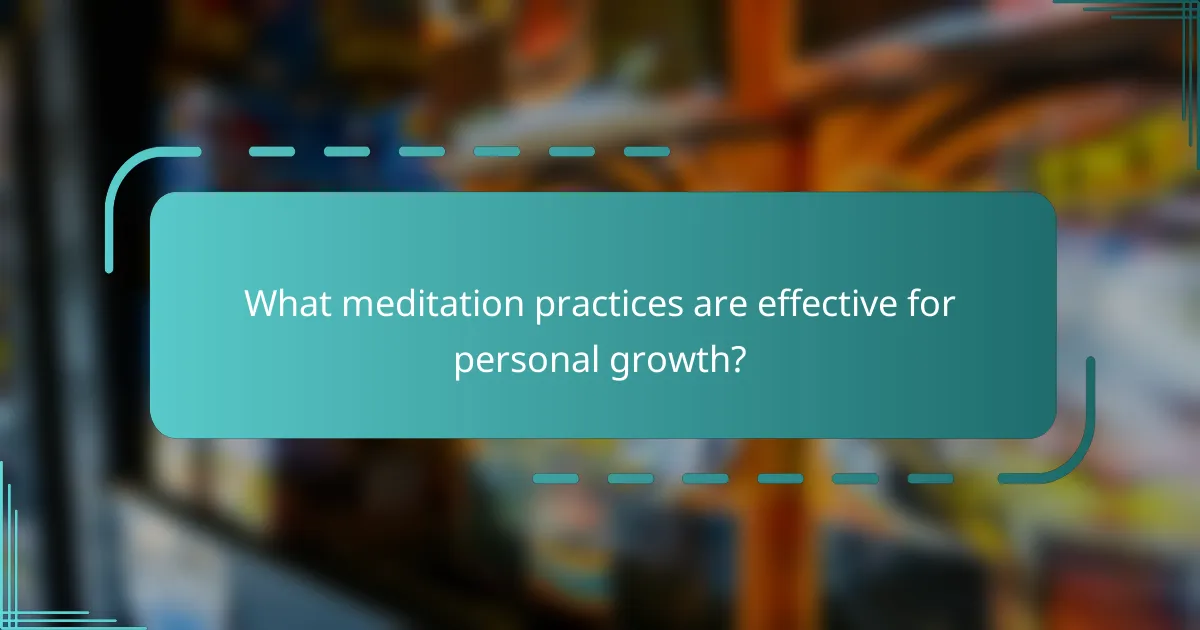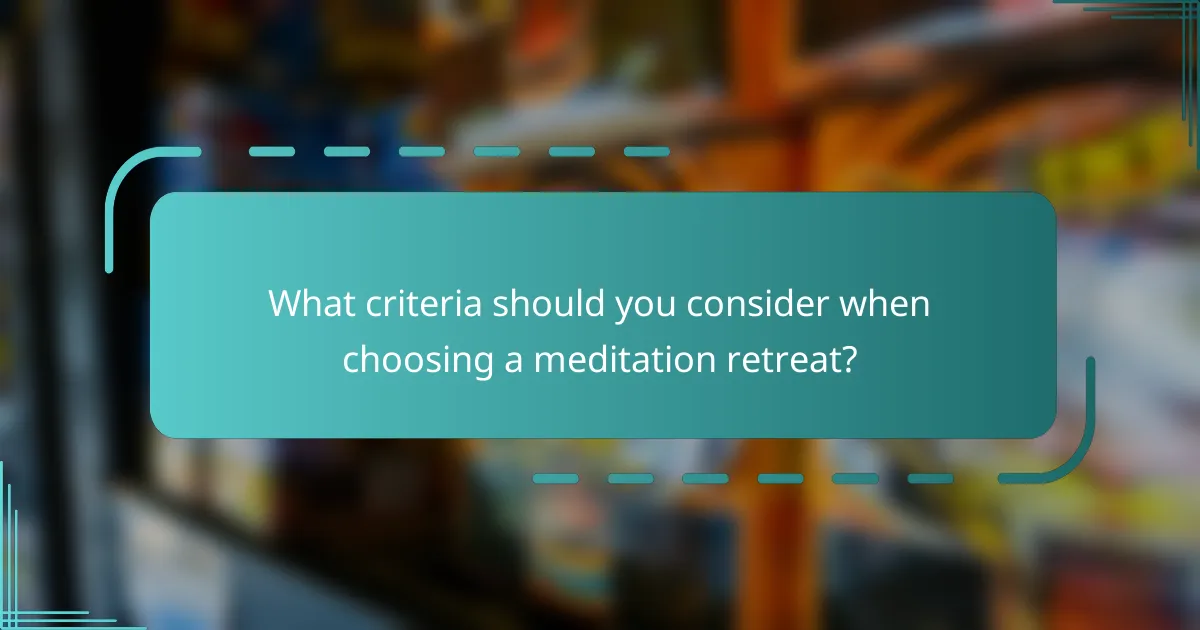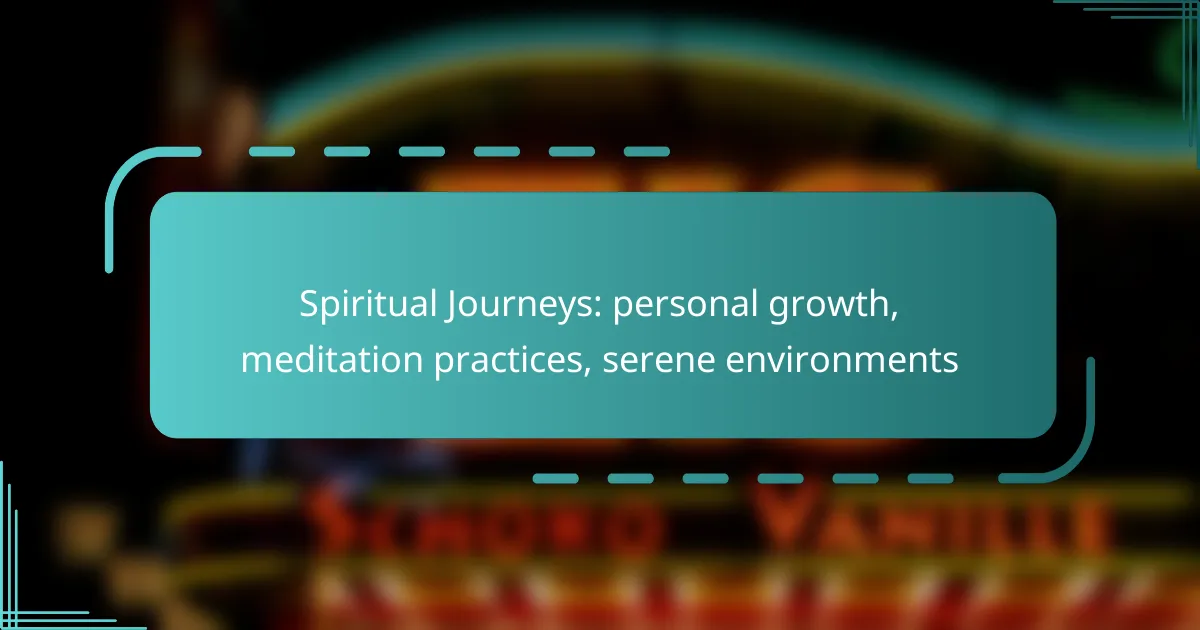Embarking on a spiritual journey can profoundly impact personal growth, providing a pathway to deeper self-awareness and emotional healing. Through meditation practices and immersion in serene environments, individuals can cultivate clarity and insight, fostering transformative experiences that enhance overall well-being.

How can spiritual journeys enhance personal growth?
Spiritual journeys can significantly enhance personal growth by fostering deeper self-understanding and emotional development. Engaging in practices such as meditation and spending time in serene environments allows individuals to reflect on their thoughts and feelings, leading to transformative insights.
Increased self-awareness
Spiritual journeys promote increased self-awareness by encouraging introspection and reflection. Through practices like meditation, individuals can observe their thoughts and emotions without judgment, which helps them understand their motivations and behaviors better.
To enhance self-awareness, consider setting aside time each day for quiet reflection or journaling. This can help clarify your thoughts and identify patterns in your behavior that may need attention.
Improved emotional resilience
Engaging in spiritual practices can lead to improved emotional resilience, enabling individuals to cope better with life’s challenges. By developing a deeper understanding of oneself, individuals can learn to manage stress and adversity more effectively.
Practices such as mindfulness meditation can help cultivate a calm mind, making it easier to navigate difficult emotions. Regularly practicing gratitude can also strengthen emotional resilience by shifting focus from negative to positive experiences.
Enhanced mindfulness practices
Spiritual journeys often incorporate mindfulness practices, which can enhance overall well-being. Mindfulness involves being fully present in the moment, allowing individuals to experience life more fully and reduce anxiety.
To incorporate mindfulness into your daily routine, try focusing on your breath for a few minutes each day or engage in mindful walking in nature. These simple practices can help ground you and promote a sense of peace.
Connection to nature
Spiritual journeys frequently emphasize the importance of connecting with nature, which can foster a sense of peace and belonging. Spending time outdoors can rejuvenate the spirit and provide a backdrop for reflection and meditation.
Consider planning regular visits to natural settings, such as parks or forests, to enhance your spiritual practice. Activities like hiking or simply sitting quietly in nature can deepen your connection to the environment and yourself.
Community support
Participating in spiritual journeys often involves engaging with a community, which can provide essential support and encouragement. Sharing experiences with others can foster a sense of belonging and motivate personal growth.
Look for local meditation groups, spiritual retreats, or online communities that align with your interests. Connecting with like-minded individuals can enhance your journey and provide valuable insights and encouragement along the way.

What meditation practices are effective for personal growth?
Effective meditation practices for personal growth include techniques that enhance self-awareness, emotional regulation, and mental clarity. By engaging in these practices regularly, individuals can experience significant improvements in their overall well-being and personal development.
Mindfulness meditation
Mindfulness meditation focuses on being present in the moment and observing thoughts and feelings without judgment. This practice can help individuals develop greater self-awareness and reduce stress by encouraging a non-reactive state of mind.
To practice mindfulness meditation, find a quiet space, sit comfortably, and concentrate on your breath. If your mind wanders, gently bring your focus back to your breathing. Aim for sessions of 10-20 minutes daily to cultivate a consistent habit.
Transcendental meditation
Transcendental meditation (TM) is a technique that involves silently repeating a specific mantra to settle the mind into a state of profound rest. This practice can lead to reduced anxiety and improved emotional health.
TM typically requires instruction from a certified teacher, and sessions last about 15-20 minutes, twice a day. Practitioners often report increased clarity and creativity as they engage in this structured form of meditation.
Guided visualization
Guided visualization involves imagining a peaceful scene or scenario, often led by a facilitator or audio recording. This practice can enhance relaxation and promote positive mental imagery, aiding personal growth.
To practice guided visualization, find a comfortable position and listen to a recording or follow along with a script. Focus on the details of the visualization, such as colors, sounds, and sensations. Sessions can last from 10 to 30 minutes, depending on personal preference.
Zen meditation
Zen meditation, or Zazen, emphasizes seated meditation and mindful breathing. This practice encourages deep concentration and can foster a sense of inner peace and clarity.
To practice Zen meditation, sit in a comfortable position with your back straight and focus on your breath. Allow thoughts to come and go without attachment. Start with shorter sessions of about 5-10 minutes, gradually increasing as you become more comfortable with the practice.

Where are the best serene environments for meditation?
The best serene environments for meditation are locations that promote tranquility and focus, allowing individuals to deepen their practice. National parks, retreat centers, temples, and beaches around the world offer unique settings that enhance the meditation experience.
National parks in the USA
National parks in the USA provide vast, natural landscapes that are ideal for meditation. Locations such as Yosemite, Yellowstone, and the Grand Canyon offer breathtaking views and peaceful surroundings, allowing for deep reflection and connection with nature.
When choosing a national park for meditation, consider visiting during off-peak seasons to avoid crowds. Early mornings or late afternoons often provide the quietest moments, enhancing your meditation practice.
Retreat centers in Costa Rica
Costa Rica is home to numerous retreat centers that specialize in meditation and personal growth. These centers often combine lush tropical environments with structured programs, offering guided meditations, yoga sessions, and wellness workshops.
Look for retreat centers that align with your meditation style and personal goals. Many offer packages that include accommodations, meals, and activities, making it easier to immerse yourself fully in the experience.
Temples in Thailand
Thailand’s temples are renowned for their serene atmospheres, making them perfect for meditation. Locations like Wat Pho and Wat Arun provide tranquil spaces surrounded by beautiful architecture and spiritual energy.
When visiting a temple for meditation, be respectful of local customs and dress codes. Participating in guided meditation sessions offered by monks can also enhance your experience and deepen your understanding of Buddhist practices.
Beaches in Bali
Bali’s beaches are famous for their stunning sunsets and peaceful vibes, creating an ideal backdrop for meditation. Locations such as Uluwatu and Seminyak offer serene settings where you can connect with the sound of the waves and the beauty of nature.
To maximize your meditation experience on the beach, choose quieter times of day, such as early morning or sunset. Bring a mat or towel for comfort, and consider incorporating the sounds of the ocean into your practice for a more immersive experience.

What criteria should you consider when choosing a meditation retreat?
When selecting a meditation retreat, consider factors such as location, instructor qualifications, program structure, and costs. These elements significantly impact your overall experience and personal growth during the retreat.
Location and accessibility
The location of a meditation retreat can greatly influence your experience. Look for serene environments that promote tranquility, such as mountains, forests, or near bodies of water. Ensure the retreat is easily accessible, considering travel time and transportation options.
Check if the retreat offers shuttle services from nearby airports or public transport links. A remote location may enhance your experience, but it should not be too difficult to reach.
Instructor qualifications
Qualified instructors are crucial for a meaningful meditation experience. Research their backgrounds, training, and teaching styles to ensure they align with your goals. Look for instructors with certifications from recognized meditation organizations or extensive personal practice.
Consider reading reviews or testimonials from previous participants to gauge the effectiveness and approachability of the instructors. A good fit can significantly enhance your learning and growth during the retreat.
Program structure
The structure of the retreat program should align with your personal goals and preferences. Some retreats offer a mix of guided meditations, silent periods, and workshops, while others may focus solely on specific techniques like mindfulness or transcendental meditation.
Review the daily schedule to ensure it includes sufficient time for practice, reflection, and integration. A well-balanced program can help you deepen your meditation practice and facilitate personal growth.
Cost and accommodations
Costs for meditation retreats can vary widely, typically ranging from a few hundred to several thousand dollars, depending on the length and amenities offered. Be clear about what is included in the price, such as meals, accommodations, and materials.
Evaluate the type of accommodations provided, from shared dorms to private rooms, and consider your comfort level. Ensure that the facilities meet your needs and preferences, as this can impact your overall experience during the retreat.
